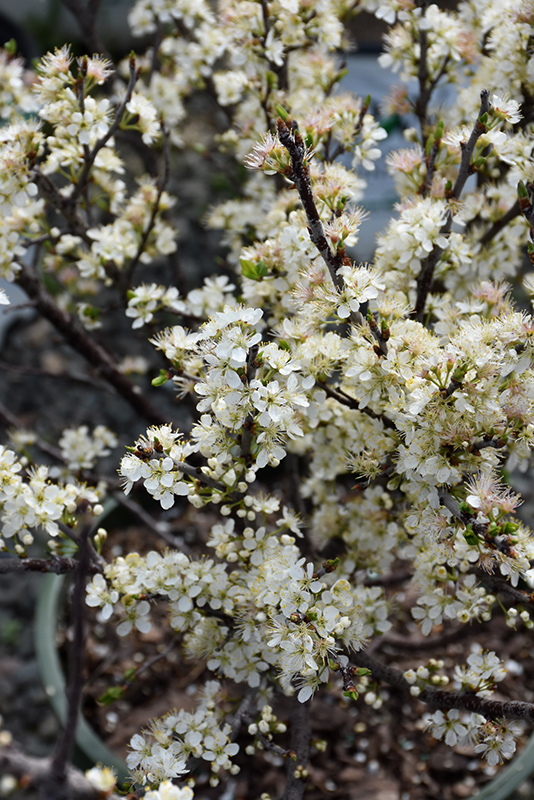Brunswick
422 Bath Road
Brunswick, ME 04011
1-800-339-8111
207-442-8111
Falmouth
89 Foreside Road
Falmouth, ME 04105
1-800-244-3860
207-781-3860
Cumberland
201 Gray Rd (Route 100)
Cumberland, ME 04021
1-800-348-8498
207-829-5619
Height: 6 feet
Spread: 6 feet
Sunlight:
![]()
![]()
Hardiness Zone: 3a
Description:
A pretty shrub with many uses; ornamentally the white flowers in spring are very showy, the reddish-purple to blue fruit are excellent for making jams and jellies, and the wandering habit makes it ideal for screening; highly tolerant of adverse conditions
Ornamental Features
Beach Plum is clothed in stunning fragrant white flowers along the branches in mid spring before the leaves. It has green deciduous foliage. The pointy leaves turn an outstanding orange in the fall. The fruits are showy burgundy drupes with silvery blue overtones, which are displayed from mid to late summer.
This plant is primarily grown as an ornamental, but it's also valued for its edible qualities. The round tart fruit is most often used in the following ways:
- Baking
- Preserves
Landscape Attributes
Beach Plum is a dense multi-stemmed deciduous shrub with a more or less rounded form. Its average texture blends into the landscape, but can be balanced by one or two finer or coarser trees or shrubs for an effective composition.
This shrub will require occasional maintenance and upkeep, and is best pruned in late winter once the threat of extreme cold has passed. It is a good choice for attracting birds to your yard. Gardeners should be aware of the following characteristic(s) that may warrant special consideration;
- Suckering
Beach Plum is recommended for the following landscape applications;
- Mass Planting
- Hedges/Screening
- General Garden Use
- Naturalizing And Woodland Gardens
- Orchard/Edible Landscaping
Planting & Growing
Beach Plum will grow to be about 6 feet tall at maturity, with a spread of 6 feet. It has a low canopy, and is suitable for planting under power lines. It grows at a medium rate, and under ideal conditions can be expected to live for approximately 20 years. This is a self-pollinating variety, so it doesn't require a second plant nearby to set fruit.
This shrub does best in full sun to partial shade. It does best in average to evenly moist conditions, but will not tolerate standing water. It is not particular as to soil pH, but grows best in sandy soils, and is able to handle environmental salt. It is highly tolerant of urban pollution and will even thrive in inner city environments. This species is native to parts of North America.

